About Associations
Intent Architect's Domain Designer enables modelling of a sub-set of UML, in particular, class diagrams. It supports modelling of Classes, their Attributes, Operations (method invocations) and Associations (relationships) between classes.
This article will focus on the different options available within the Domain Designer for modelling Associations and how to do so.
Note
This article will regularly refer to Source End and Target End, these are sections in the properties pane in the bottom-right corner of the Domain Designer:
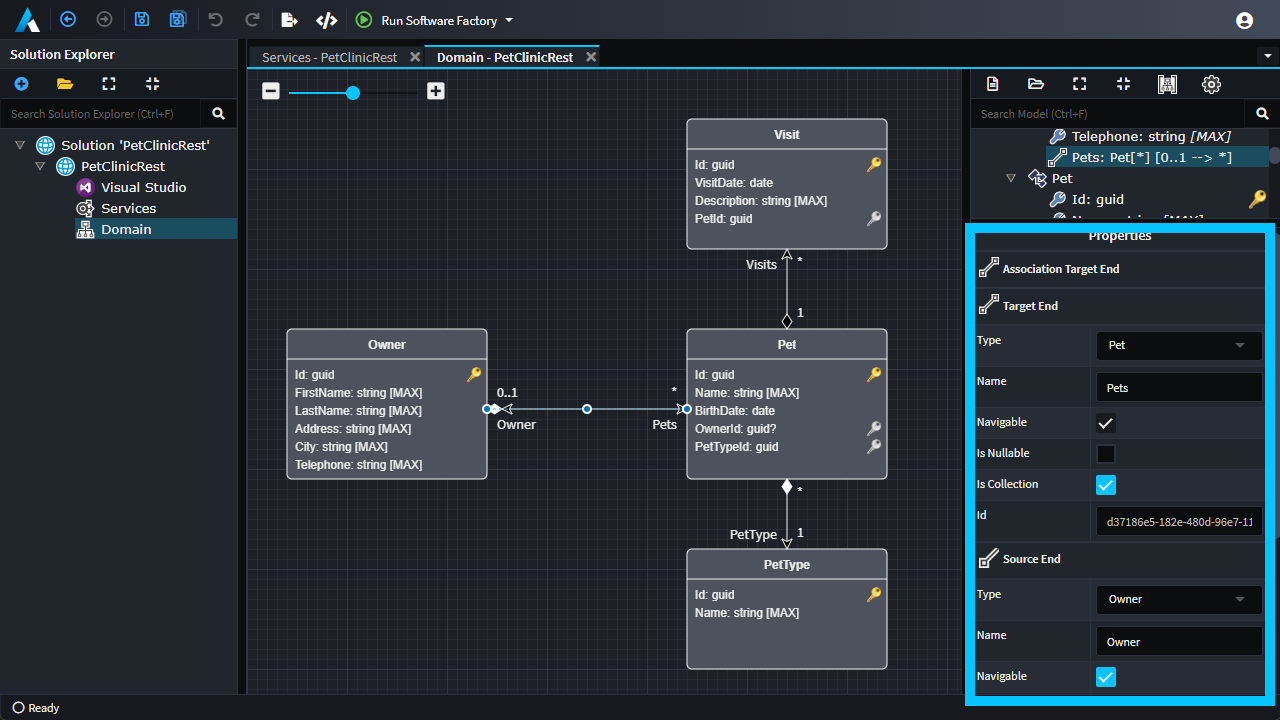
Association types
Association types are used to describe the ownership between Entities.
Composition Association
Composition relationship
- When attempting to represent real-world whole-part relationships, e.g. an engine is a part of a car.
- When the container is destroyed, the contents are also destroyed, e.g. a university and its departments.

A Composition Association can be achieved by setting the properties of the Association as follows:
| Source End | Target End |
|---|---|
| ⬜ Navigable | ✅ Navigable |
| ⬜ Is Nullable | ⬜ Is Nullable |
| ⬜ Is Collection | ✅ Is Collection |
Aggregation Association
Aggregation relationship
- When representing a software or database relationship, e.g. car model engine ENG01 is part of a car model CM01, as the engine, ENG01, may be also part of a different car model.[8]
- When the container is destroyed, the contents are usually not destroyed, e.g. a professor has students; when the professor dies the students do not die along with them.

An Aggregation Association be achieved by setting the properties of the Association as follows:
| Source End | Target End |
|---|---|
| ⬜ Navigable | ✅ Navigable |
| ✅ Is Nullable | ⬜ Is Nullable |
| ⬜ Is Collection | ✅ Is Collection |
Multiplicity types
Multiplicity is a definition of cardinality - i.e. number of elements - of some collection of elements by providing an inclusive interval of non-negative integers to specify the allowable number of instances of described element.
Intent Architect's Domain Designer allows modelling of the following Multiplicity types:
| Range | Description |
|---|---|
| 1 | One-to-one relationship (exactly one instance) |
| 0..1 | Zero-to-one relationship (no instances or one instance) |
| * | Zero-to-many relationship (zero or more instances) |
One-to-one relationship
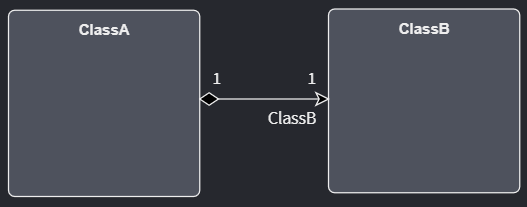
ClassA has an association to only one instance of ClassB and ClassB also has only one instance of association with ClassA.
This can be achieved by setting the properties of the Association as follows:
| Source End | Target End |
|---|---|
| ⬜ Navigable | ✅ Navigable |
| ⬜ Is Nullable | ⬜ Is Nullable |
| ⬜ Is Collection | ⬜ Is Collection |
Zero-or-one to zero-or-one
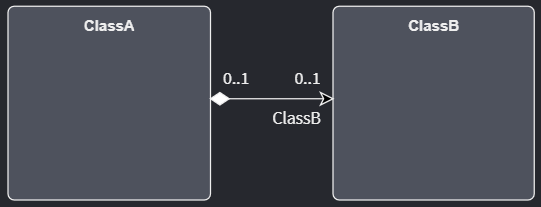
ClassA has an association of zero or one instances of ClassB and ClassB also has zero or one instance of association with ClassA.
This can be achieved by setting the properties of the Association as follows:
| Source End | Target End |
|---|---|
| ⬜ Navigable | ✅ Navigable |
| ✅ Is Nullable | ✅ Is Nullable |
| ⬜ Is Collection | ⬜ Is Collection |
One-to-many
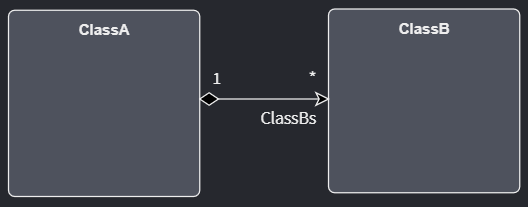
ClassA has many instances of association with ClassB but ClassB only has one instance of association with ClassA.
This can be achieved by setting the properties of the Association as follows:
| Source End | Target End |
|---|---|
| ⬜ Navigable | ✅ Navigable |
| ⬜ Is Nullable | ⬜ Is Nullable |
| ⬜ Is Collection | ✅ Is Collection |
Many-to-One
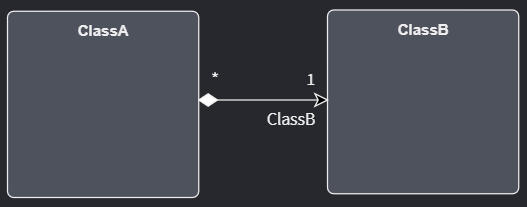
ClassA has only one instance of association with ClassB but ClassB has many instances of association with ClassA.
This can be achieved by setting the properties of the Association as follows:
| Source End | Target End |
|---|---|
| ⬜ Navigable | ✅ Navigable |
| ⬜ Is Nullable | ⬜ Is Nullable |
| ✅ Is Collection | ⬜ Is Collection |
Many-to-many

Both ClassA and ClassB have many instances of association with each other.
This can be achieved by setting the properties of the Association as follows:
| Source End | Target End |
|---|---|
| ⬜ Navigable | ✅ Navigable |
| ⬜ Is Nullable | ⬜ Is Nullable |
| ✅ Is Collection | ✅ Is Collection |
Navigability
End property of association is navigable from the opposite end(s) of association if instances of the classifier at this end of the link can be accessed efficiently at runtime from instances at the other ends of the link.
Uni-directional Association

ClassA can access ClassB via the ClassB association property but ClassB cannot access ClassA directly.
This can be achieved by setting the properties of the Association as follows:
| Source End | Target End |
|---|---|
| ⬜ Navigable | ✅ Navigable |
| ⬜ Is Nullable | ⬜ Is Nullable |
| ⬜ Is Collection | ⬜ Is Collection |
Bi-directional Association
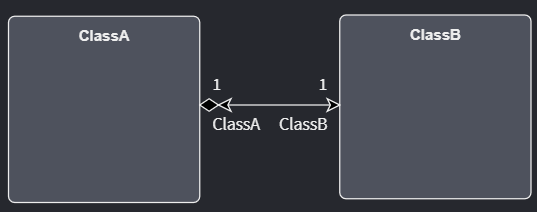
ClassA can access ClassB via the ClassB association property and ClassB (vice-versa) can access ClassA via the ClassA association property.
This can be achieved by setting the properties of the Association as follows:
| Source End | Target End |
|---|---|
| ✅ Navigable | ✅ Navigable |
| ⬜ Is Nullable | ⬜ Is Nullable |
| ⬜ Is Collection | ⬜ Is Collection |
Reflexive Association
The below video demonstrates how to set up an Association where a Class can access another instance of type Class via the Class Association property.
[!Video-Loop videos/association-reflexive.mp4]